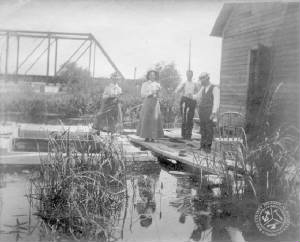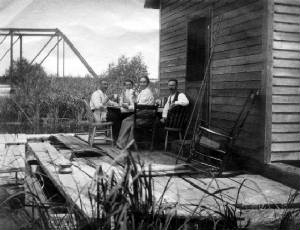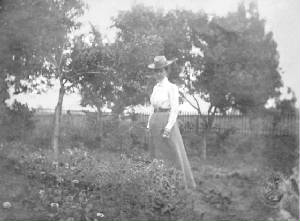by Sam Fitzpatrick
The City
of Bangor was originally a 327.5-foot-long steel steamer built in Frank W. Wheeler’s shipyard formerly located
in West Bay City just north of the railroad bridge. The ship was built for the Eddy-Shaw firm of Bay City and in 1906 transferred
to the Lake Transit Company to haul coal, grains, and iron ore. The ship was named in honor of Bangor, Maine.
The
engines in the ship were also built at Wheeler’s yard and could haul the ship along at a steady 15 mph. The boilers,
built by the Wickes Brothers in Saginaw, were 63 tons each making them the largest to be put inside a Great Lakes freighter
at the time. Being quite large, they could not be transported by rail, so they were towed by a barge from Saginaw to West
Bay City.
The ship was launched in March 1896. Because of the size of the ship, 12 oak timbers spaced 12 feet from one
another were used to roll the ship from the side into the Saginaw River. These oak timbers were greased with 600 pounds of
tallow.
The deck interiors were quite lavish and the finest on the lakes. The cabins were trimmed with birch and
sycamore. In 1905, the ship was extended to 445.5 feet for more capacity.
In 1926, it was sold for a third time,
to transport new cars from Detroit to other Great Lakes markets by the Nicholson Universal S.S. Company. This new system had
yet to be perfected. The new cars were loaded onto the City of Bangor by a ramp then elevators transferred
the vehicles to the lower decks. Every available spot on the ship was used to hold cargo, including the upper deck.
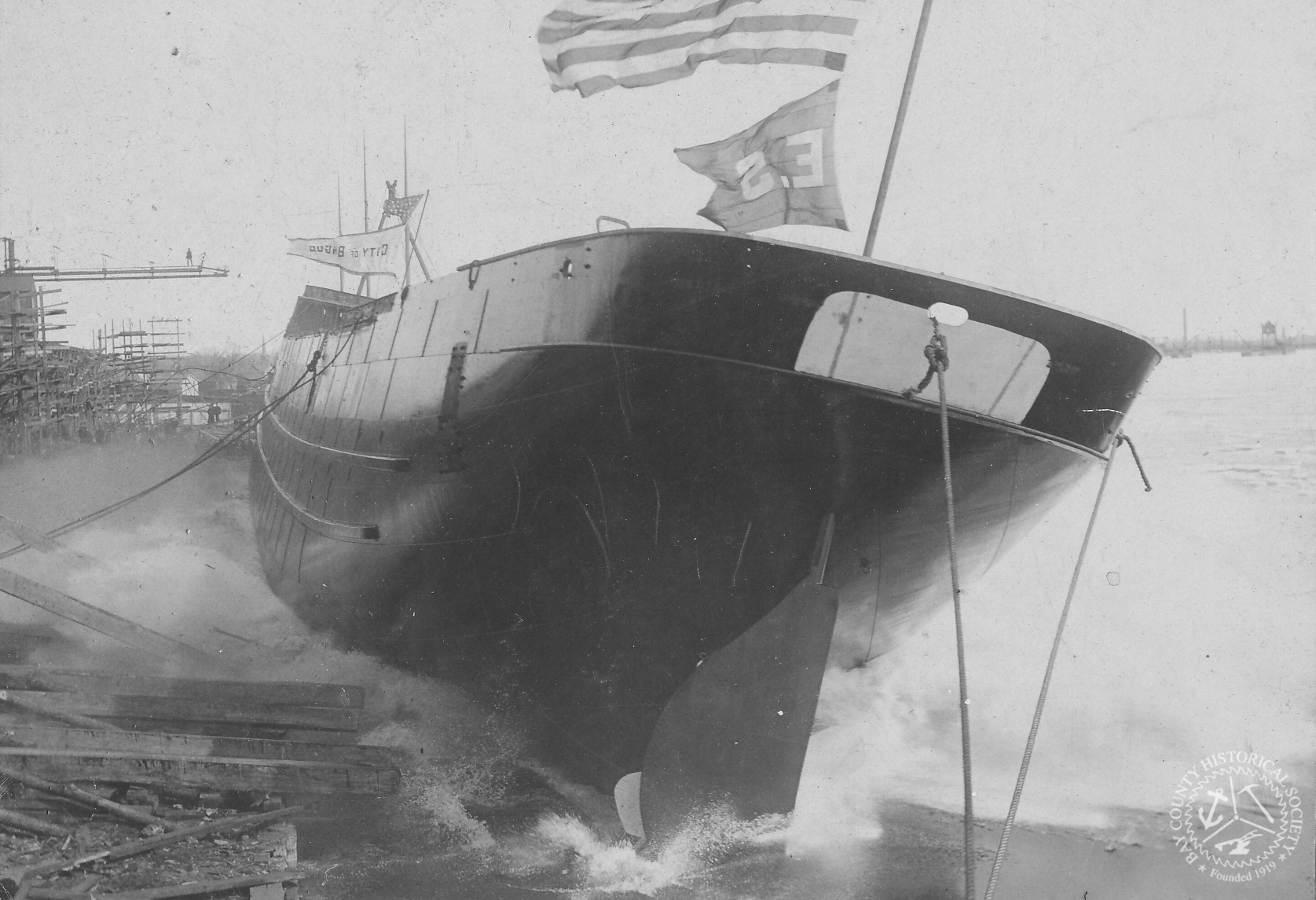
The City of Bangor’s End
Her career ended
abruptly when it became grounded while en route to Duluth, MN on November 30, 1926. During a harsh winter storm, the City
of Bangor was rounding the Keweenaw Peninsula when the icy waves proved to be too harsh. Hoping to make it to Eagle
Harbor, the crew decided to turn around to Bete Gris. The steering gear broke, causing the ship to aimlessly wander. The storm
was so bad that icy waves were smacking the ship causing the Bangor to be covered in ice. The ship then
slammed into a reef by Keweenaw Point, not far from shore, with a 20-foot hole in the bottom.
Launching lifeboats
and managing to reach the nearby shore, the crew started fires and waited out the storm. With the lack of population in the
area and no ships out due to the storm, the men made their way by foot in waist-deep snow to Copper Harbor. After a few hopeless
days, the crew was spotted by a U.S. Coast Guard vessel that was out saving another ship by Horseshoe harbor. The men were
taken to an Inn that could not accommodate the 31-man crew, and then to a nearby barn for shelter.
The R.J. Kappahan
Contracting Company was hired for $35,000 to chop the cars free from the ice. Most of the brand-new 200-plus Chryslers were
removed by chopping through the 10-inches of ice by men working in 15-degree weather. Once freed, they were hauled by tractor
to shore and then driven to Copper Harbor to store for the remainder of the winter. The ship, however, was deemed a total
loss. The following spring, the City of Bangor was taken apart by scavengers and the scrap was sold to
T.L. Durocher of Detour, Michigan.
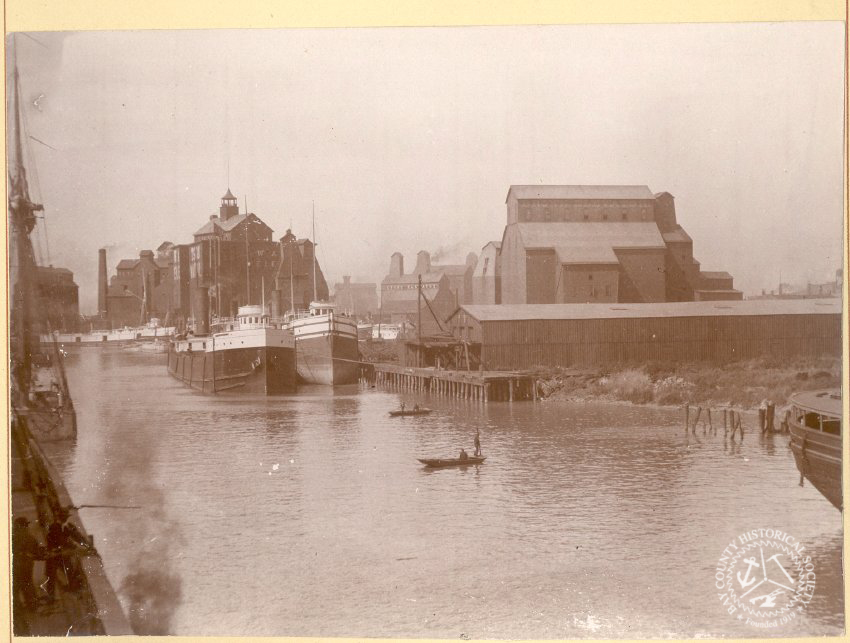
Other City of Bangor Incidents
Although this
final accident sealed the City of Bangor’s fate, it was one of a few other incidents recorded:
- On
December 2, 1915, the ship became stranded along the rocky shores of Isle Royale while loaded with coal headed north from
the lower lakes. Fortunately, the increased weight prevented the ship from becoming further stuck along the rocks. Within
three days, the ship was salvaged and returned to its route to Duluth, MN.
- On May 22, 1918, in South Chicago, the City
of Bangor struck the concrete dock of the Wisconsin Steel Company and damaged the starboard side.
- On
May 26, 1918, the City of Bangor was headed to Superior, Wisconsin, in heavy fog conditions on its way
to load iron ore. Five miles east of the Superior Entry Canal it found itself off course, veering close to the southern shore
of the lake. The propeller struck the bottom and lost all four blades. The ship had to be towed to the harbor and repaired.
Ship
Specs
Hull Number: 113
Breadth: 44.8
Depth: 23.5
Gross Registered Tonnage: 3,690
Registry
Number: US 127131
Engines: Triple expansion 22”, 35”, 59” diameter 44”
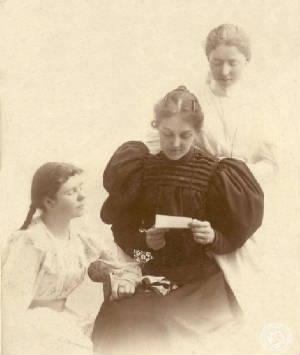 Salome M. Bean was born to David Bean and Anna Martha Truemner in Ontario, Canada on August 14, 1864. In the 1870s,
her family settled in Tuscola County, Michigan. She married August C. Schmoock on June 25, 1902, near Akron, Michigan.
August was born in Denmark on August 3, 1864, to parents William Schmoock and Louise Otto.
Salome M. Bean was born to David Bean and Anna Martha Truemner in Ontario, Canada on August 14, 1864. In the 1870s,
her family settled in Tuscola County, Michigan. She married August C. Schmoock on June 25, 1902, near Akron, Michigan.
August was born in Denmark on August 3, 1864, to parents William Schmoock and Louise Otto.